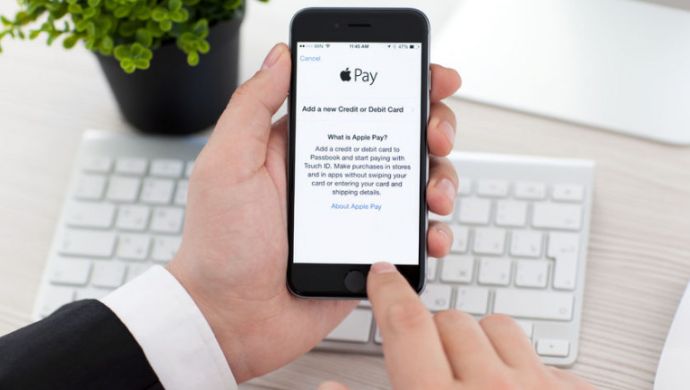It seems that Apple Pay has failed to become a real threat to the dominance of Alibaba’s Alipay and Tencent-backed Tenpay

After a slow start, Apple Pay is now dominating its home country, the United States. Data from Boston Retail Partners shows that Apple Pay is now accepted by 36 per cent of merchants in the United States, becoming the most popular mobile payment method in the nation. However, it’s only recording lukewarm or even cold reception in China, which is estimated to be the world’s largest mobile payment market.
When Apple Pay first landed in the Middle Kingdom one year ago, the smartphone giant was expected to make a serious dent in China’s highly consolidated mobile payment market; more than 30 million bankcards were added to Apple Pay during the first day of its official launch.
After one year of operation in China, however, it seems that Apple Pay has failed to become a real threat to the dominance of Alibaba’s Alipay and Tencent-backed Tenpay (operator of WeChat Pay), two leading payment tools in the country.
In Q3 last year, Alipay and Tenpay took 50.42 per cent and 38.12 per cent of China’s mobile payment market, data from research institution Analysys showed. With the two leading payment tool taking monopoly, the rest of the players only recorded single-digit shares of the market. Apple Pay did not even make to the top-ten list with shares so small that can be overlooked.
Here are some of the pitfalls that stood in the way of Apple Pay in China.
Also Read: Sssst. Apple Pay users, here’s your cheat sheet for available rebates in Singapore
QR codes rule in China
Technologically speaking, NFC, used by Apple Pay, enjoys many advantages over QR code with its touch-and-go approach and built-in security. But QR code payment has become the widely adopted and deep-rooted practice for Chinese users. Once these habits are formed, they prove difficult to change.
China UnionPay, Apple Pay’s Chinese partners and a long-time proponent of NFC, even succumbed to the QR code pressure and launched its own solution late last year. This is an even bigger surprise given that UnionPay has already partnered with smartphone makers Huawei and Xiaomi to push NFC adoption in China. However, as we can see, this hasn’t changed users habits.
In addition, NFC’s reliance on NFC-equipped smartphones and NFC-compatible POS terminals are also roadblocks for its wide application.
Open payment platforms versus iPhone only service
As a third-party payment services, both Alipay and Tenpay are cross-platform services that are open to users regardless of operating systems and smartphone brands. Hundreds of millions of people are using their smartphone apps to pay both offline and online. Alipay claimed a whopping 450 million users, with Tenpay coming in at a close second.
In comparison, Apple Pay, which only works with Apple hardware, automatically excludes a majority of the China market that only use Android-based phones. What’s more, Apple Pay only supports iPhone 6 or higher. Couple this with iPhone’s slowing sales in the country and it is no surprise the payment option isn’t doing so well.
Also Read: Visa and MasterCard users rejoice: Apple Pay partners with 5 major banks in Singapore
Extensive offline expansion versus limited offline visibility
In just one day of shopping in China, you will come across legions of Alipay and WeChat Pay logos adorning storefronts and cash registers in department stores, boutiques, and even the small shop down the street.
On the other hand, Apple Pay has much less offline presence due to the limited support. It is usually only available in larger chain brands such as Starbucks, Costa Coffee, Carrefour, and 7-Eleven. Even then, many of these stores will also accept both Alipay and WeChat.
Furthermore, Alipay and Tenpay’s offline presence are fueled by their heavy-subsidised expansion plan. Although it’s clear that subsidised expansion is not sustainable, this model has proven a successful way to attract users in many verticals, including ride-hailing, bike-rental, group buying, and other O2O services.
—
The article One year on, Apple Pay finding little traction in the Middle Kingdom first appeared in Technode.
The post One year on, Apple Pay finding little traction in the Middle Kingdom appeared first on e27.